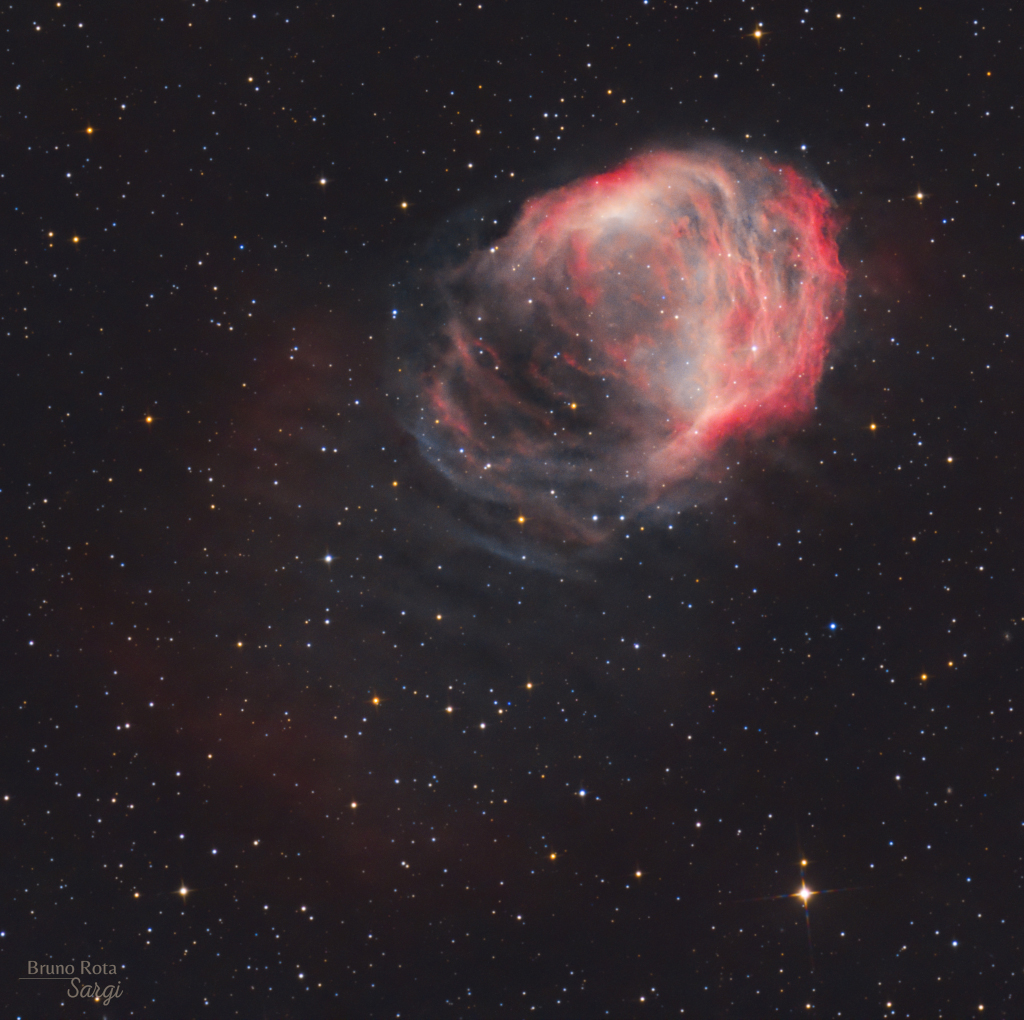
The nebula’s popular name, “The Medusa Nebula,” is derived from the braided and serpentine filaments of glowing gas observed in its structure. Additionally, this nebula is designated as Abell 21 and is classified as an old planetary nebula, situated at a distance of approximately 1,500 light-years within the Gemini constellation. Similarly to its mythological namesake, the nebula is associated with a dramatic transformation. The planetary nebula phase represents the final stage of evolution for low-mass stars like the Sun, marking their transformation from red giants to hot white dwarf stars and the subsequent shedding of their outer layers. Ultraviolet radiation from the hot star powers the nebular glow. The Medusa’s transforming star is the faint one near the center of the overall bright crescent shape. In this deep telescopic view, fainter filaments clearly extend below and to the left. The estimated diameter of the Medusa Nebula is over four light-years.

